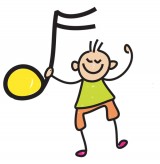Get pupils in tune with their emotions, relationships and surroundings with the help of some words and music…
Singing is not only a fantastic tool for supporting learning across all areas of the curriculum; it is also proven to help improve children’s memories, confidence, health and social development. It strengthens bonds, cements community and can instil a feeling of wellbeing. Songs can help us reflect on who we are, how we relate to others, what we want from life and how fortunate we are to be happy – meaning that they can very naturally be incorporated into PSHE lessons, as the following suggestions, utilising resources from the Sing Up website (http://www.singup.org), demonstrate:
Ask the children to find out as much as they can about a friend in the class, and then introduce him or her to everyone, focusing on positive aspects, such as what they are good at. The song You’ve got a friend in me, as used in Disney’s Toy Story can then be used to promote friendships. What makes a good friend?
Learning that we’re all good at something and that our differences should be celebrated is fundamental to developing into confident individuals. Ask pupils to draw a spider diagram with their name and a picture of themselves at the centre. Around this, they can draw and label aspects of themselves they are proud of, e.g. being good at reading, or sport. The song Good to be me on the Song Bank at (singup.org) helps make us feel valued for our individuality, whilst Lean on me, We’re all in this together, I’m gonna be your friend, Just one person, Ain’t no mountain high enough and I’m OK celebrate us in relation to others. [Referencing lesson plan by Simon Bradshaw and Chris England]
What do your pupils want to be when they grow up? What will be the contribution to society of doing that job, and how would it feel? Dress up and add the actions to relevant songs: Old Mac Donald, The farmer in the dell, Gerry’s song, People who help us etc.
Society is a melting pot of people who have different roles and responsibilities. This is often the case in a piece of music, too. Listen to a song that features several instruments. What can you hear? How does each role contribute? What other jobs might have aided the song’s existence that might not be immediately apparent? Choose a song and give out roles – the singing leaders, the rhythmkeepers, the melody singers, the harmonisers etc.
Learn the song Bad guys, from Bugsy Malone. Why are laws in place? Explore the subject of morality and contemplate why someone might ‘choose to be bad’. How can we become good citizens? [Activities devised by Mia Vigar]
 The concept of building is central to PSHE, both metaphorically and physically. Take the children outside to look at your school building. What materials is it made of? When was it built and by whom? How many children has it housed over the years? There are several songs on the Song Bank that explore building – Building, Build it high, Moving the stones etc. What is needed for a structure to last? Ask the children what else can be built. Discuss the significance of ‘building’ as a metaphor. How can we communicate the emotions that the word ‘building’ makes us feel, in a song? [Referencing activity notes by Leonora Davies]
The concept of building is central to PSHE, both metaphorically and physically. Take the children outside to look at your school building. What materials is it made of? When was it built and by whom? How many children has it housed over the years? There are several songs on the Song Bank that explore building – Building, Build it high, Moving the stones etc. What is needed for a structure to last? Ask the children what else can be built. Discuss the significance of ‘building’ as a metaphor. How can we communicate the emotions that the word ‘building’ makes us feel, in a song? [Referencing activity notes by Leonora Davies]
Lyrics, audio tracks, sheet music, notes and activities for all the songs mentioned within this article can be found at singup.org, along with the lesson plans featured here and for other curriculum subjects.
Why every child should feel at home in an art gallery
Ace-Art-And-Design
Reorganise your music room
Ace-Music
5 Ways To Celebrate World Book Day
Ace-Classroom-Support
